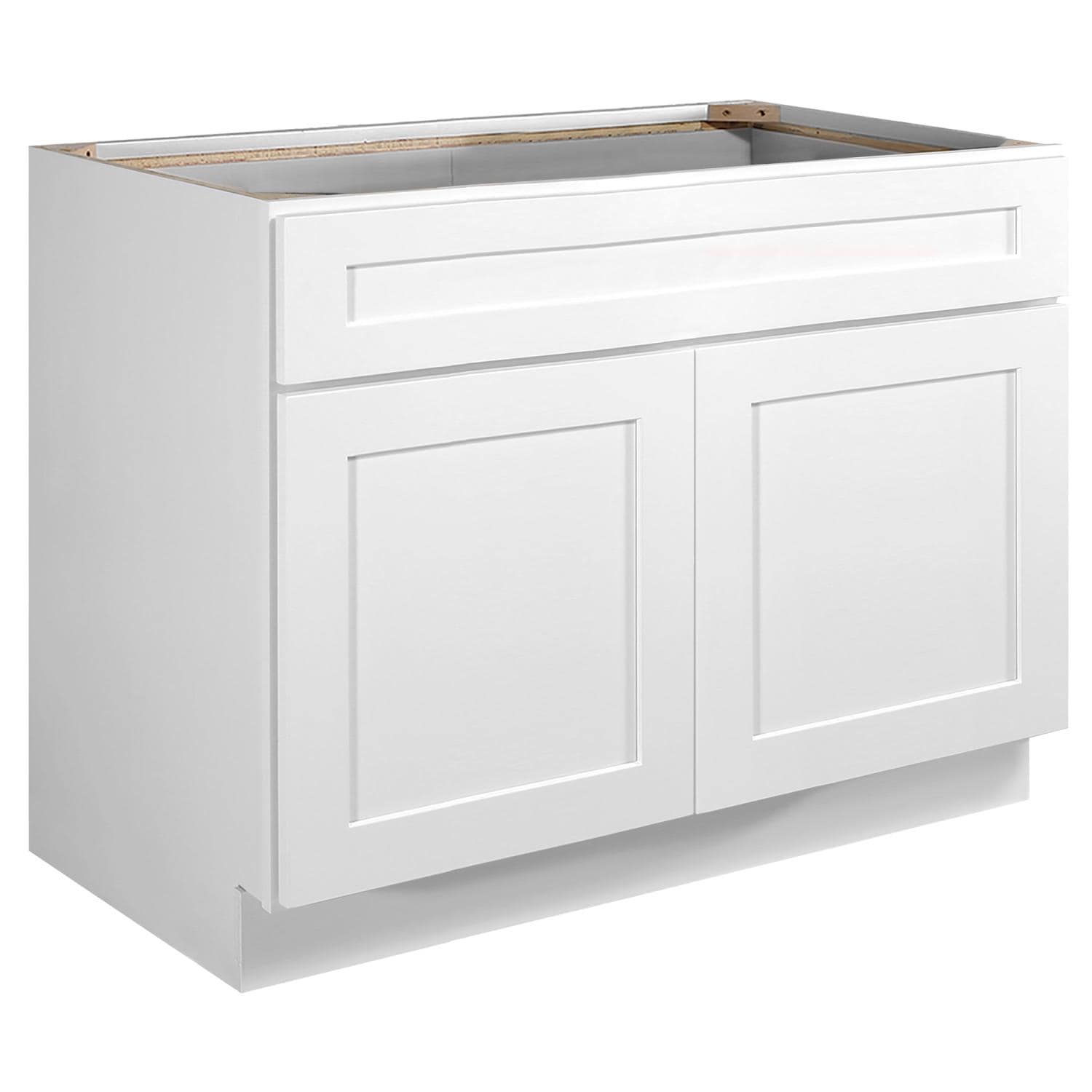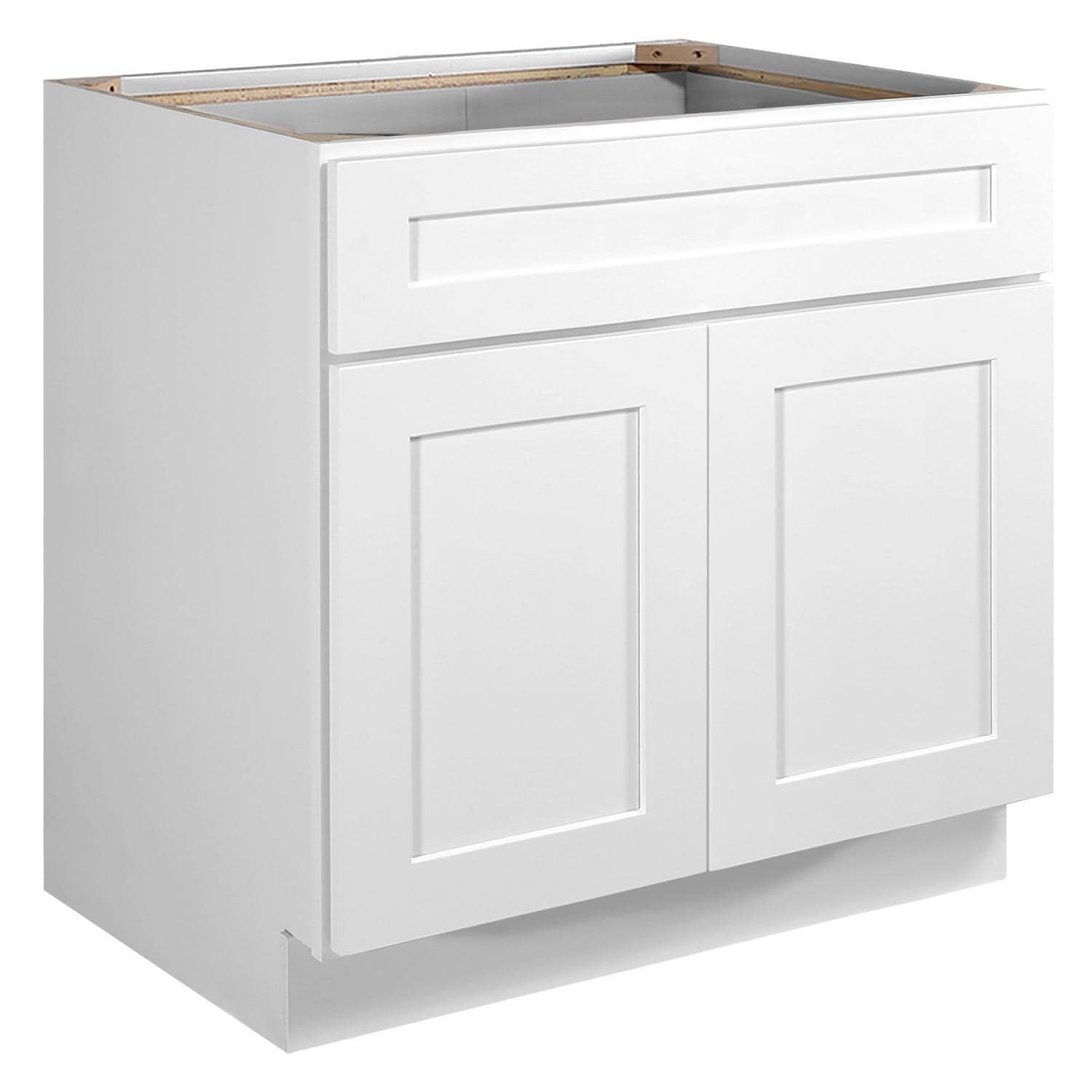Understanding the Fit: 33 Inch Sink In 36 Inch Cabinet

Installing a 33-inch sink in a 36-inch cabinet is a common scenario, and it’s important to understand the implications for both functionality and aesthetics. The limited space necessitates careful planning to ensure adequate countertop overhang, a comfortable sink depth, and a visually balanced design.
Countertop Overhang and Cabinet Depth
The countertop overhang refers to the portion of the countertop extending beyond the cabinet. With a 33-inch sink, you’ll have a 1.5-inch overhang on each side, assuming a standard 24-inch cabinet depth. This overhang provides a usable surface area for tasks like food preparation and dish drying. However, excessive overhang can create instability, so it’s crucial to use a sturdy countertop material and ensure proper support.
Sink Styles and Suitability, 33 inch sink in 36 inch cabinet
Various sink styles can accommodate this configuration, each with its own advantages and drawbacks.
Single Bowl Sinks
Single bowl sinks are a popular choice for smaller kitchens as they maximize usable space. In a 36-inch cabinet, a single bowl sink offers ample room for washing dishes and preparing food.
Double Bowl Sinks
Double bowl sinks provide greater functionality, separating tasks like washing and rinsing. However, in a 36-inch cabinet, the bowls may be smaller than in a larger configuration.
Farmhouse Sinks
Farmhouse sinks, known for their large, apron-front design, are visually striking but require careful consideration. Their wide dimensions might limit countertop space and may necessitate a deeper cabinet to accommodate the apron.
Pros and Cons of Sink Types
| Sink Type | Pros | Cons |
|---|---|---|
| Single Bowl | Maximizes usable space, ideal for smaller kitchens | Limited space for multi-tasking |
| Double Bowl | Provides dedicated areas for washing and rinsing, suitable for multi-tasking | Bowls may be smaller than in larger configurations |
| Farmhouse | Visually appealing, offers ample washing space | May require a deeper cabinet, can limit countertop space |
Cabinet Considerations

Choosing the right cabinet for your 33-inch sink is crucial for a successful installation and a functional kitchen. It’s not just about the size of the sink; it’s also about the cabinet’s depth, side panels, and the hardware you choose.
Cabinet Depth and Side Panels
The depth of the cabinet should be adequate to accommodate the sink and provide enough space for plumbing and waste disposal. Standard cabinet depths typically range from 24 to 25 inches, but a 33-inch sink might require a deeper cabinet to prevent the sink from extending beyond the cabinet face.
The ideal depth for a 33-inch sink is around 27 inches.
The side panels of the cabinet are equally important. They should be strong enough to support the weight of the sink and any additional fixtures, like faucets and soap dispensers.
Standard vs. Custom Cabinets
Standard cabinets offer affordability and readily available options. However, they might not always fit perfectly with a 33-inch sink. Custom cabinets, on the other hand, offer precise measurements and can be tailored to your specific needs.
Standard Cabinets
- Typically available in pre-determined sizes.
- May require modifications to accommodate a 33-inch sink.
- More affordable than custom cabinets.
Custom Cabinets
- Made to your exact specifications.
- Ensure a perfect fit for a 33-inch sink.
- More expensive than standard cabinets.
Hardware Selection
The hardware you choose for your cabinet hinges and drawer slides can significantly impact the functionality and longevity of your cabinet.
Hinges
- Soft-close hinges provide a quiet and smooth closing experience.
- Full overlay hinges offer a sleek, modern look with minimal gaps between doors.
- Semi-overlay hinges are a more traditional option with visible door frames.
Drawer Slides
- Full extension slides allow for easy access to the entire drawer contents.
- Soft-close slides provide a smooth and quiet closing experience.
- Undermount slides offer a sleek and modern look with hidden drawer slides.
Installation Process

Installing a 33-inch sink in a 36-inch cabinet is a relatively straightforward process, but it’s essential to follow the correct steps to ensure a secure and leak-free installation. This section provides a step-by-step guide to help you successfully install your sink.
Cutting the Countertop and Securing the Sink
Before you begin, ensure you have the right tools, including a jigsaw, a template for the sink cutout, a drill, and a screwdriver.
- Measure and Mark: Use the template provided with the sink to mark the countertop where the sink will be installed. Ensure the template is centered and aligned correctly.
- Cut the Countertop: Use a jigsaw with a fine-tooth blade to cut out the marked area. Work slowly and carefully, following the lines of the template.
- Secure the Sink: Once the cutout is complete, place the sink in the opening and ensure it sits flush with the countertop. Use silicone sealant to create a watertight seal around the sink’s edges and secure it to the countertop using the provided mounting clips or screws.
Connecting Plumbing Fixtures
Connecting plumbing fixtures to the sink is a crucial step. It requires careful attention to ensure proper connections and prevent leaks.
- Attach the Drain: Connect the sink drain to the drainpipe under the cabinet. Use a wrench to tighten the connections securely.
- Connect the Faucet: Attach the faucet to the sink using the provided instructions and tools. Make sure the connections are tight and secure.
- Connect the Supply Lines: Connect the hot and cold water supply lines to the faucet using the appropriate fittings. Tighten the connections securely, but avoid over-tightening.
Testing for Leaks
After connecting the plumbing fixtures, it’s essential to test for leaks to ensure a proper installation.
- Turn on the Water: Turn on the water supply and check for leaks at all connections. If you notice any leaks, tighten the connections or apply additional sealant, as needed.
- Run the Faucet: Run the faucet for a few minutes to ensure the drain is working properly and there are no leaks.
- Check for Leaks Under the Cabinet: Inspect the area under the cabinet for any signs of leaks.
Ensuring Proper Drainage and Preventing Water Damage
Proper drainage is crucial for preventing water damage.
- Ensure Proper Slope: The countertop should have a slight slope towards the sink to allow water to drain properly.
- Check Drainpipe: Ensure the drainpipe is properly connected and runs to a drain that can handle the water volume.
- Clean the Drain Regularly: Regularly clean the sink drain to prevent clogs and ensure proper water flow.
33 inch sink in 36 inch cabinet – A 33-inch sink in a 36-inch cabinet? That’s a tight squeeze, but doable! Of course, the real question is what color to paint the walls, especially if you’ve got honey oak cabinets. You’ll want to choose a color that complements the warmth of the wood, and thankfully, there are plenty of options.
Check out this helpful guide on what paint color goes with honey oak cabinets for inspiration. Once you’ve found the perfect shade, you’ll be ready to tackle that sink installation with confidence, knowing the walls will be a perfect backdrop for your new kitchen oasis.
Ah, the age-old dilemma: a 33-inch sink in a 36-inch cabinet. It’s a tight squeeze, sure, but perhaps the real question is: do you have room for a bar cabinet with wine storage ? Because if you can find space for a dedicated wine haven, surely a little wiggle room for a sink can be found.
After all, the joy of a perfectly chilled glass of merlot should outweigh the slight inconvenience of a slightly smaller sink, wouldn’t you say?
